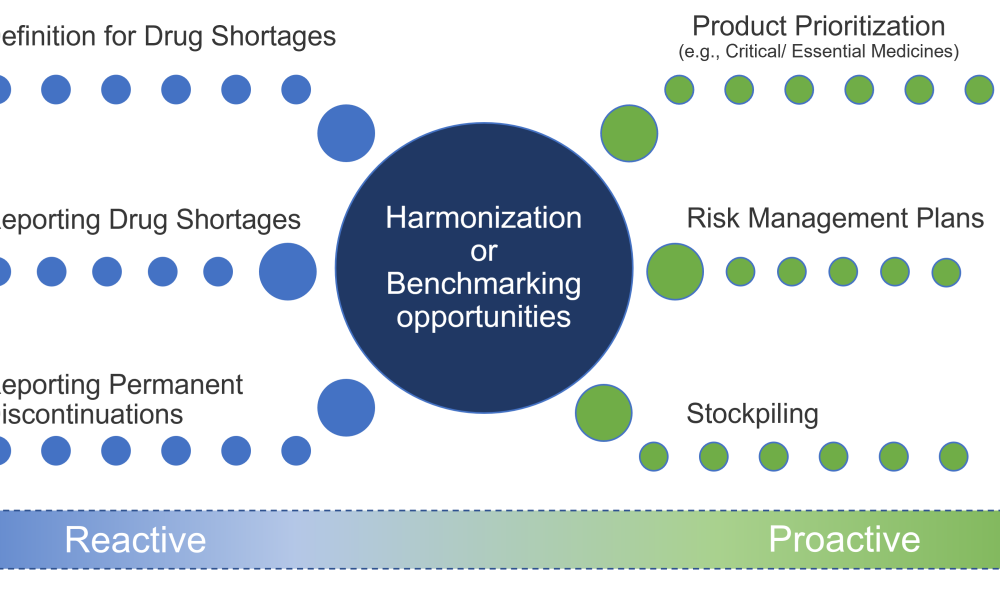2024 ISPE Aseptic Regulatory Panel Q&A

On 13 March 2024, ISPE concluded the 2024 Aseptic Conference with a regulatory panel question and answer session. Attendees were invited to submit questions to representatives from the Austrian Agency for Health and Food Safety (AGES), US Food and Drug Administration (FDA), Regierungspraesidium Tübingen (RP Tübingen), World Health Organization (WHO), Therapeutic Goods Administration (TGA), and Swissmedic. The questions focused on the implementation of Annex 1
The panelists provided valuable insights and perspectives from their areas of work. Please note that views expressed by the panelists are not necessarily representative of the position of the AGES, FDA, RP Tübingen, WHO, TGA, or Swissmedic, and that questions and responses are lightly edited for clarity.
The panelists included:
Are in-person inspections back to pre-COVID level and what has carried over in terms of distant (remote) assessments?
Daniel Müller
For our area in Southern Germany, we are back to all on-site inspections again. The first choice for every inspector I spoke to is on-site inspection. The second choice would be a hybrid. We learned to do distant (remote) assessments during the pandemic, but hybrid solutions can also work well in some situations. This could be, for example, visiting a facility one day and reviewing documents back in the office the other day. Sometimes in distant assessments, live video transmission is used for “virtual facility tours” and that can be a helpful add-on.
Christina Meissner
I know industry would love to get us off-site as much as possible, but the distant assessments during the pandemic were not easy for us and not easy for the companies being inspected, as remote is a very slow and tedious way of working. Jointly reviewing documents in a video call is stressful, but reviewing the documents offline and going back and forth with questions takes a long time. Things that can be covered in five minutes in a face-to-face meeting might take days to resolve.
Live video during a distant assessment is always a matter of trust. I’ve seen things on video that I wanted to see more closely. Then I asked them to focus on that area, but they were filming somewhere else and then it was gone. That does not build trust. So, we are always a little bit afraid that you will only show us what you want us to see and only the nice areas of your facility and not the dripping line or other mishaps. I also prefer being on-site, especially for the purpose of avoiding miscommunication and misunderstandings. Long story short: We are back with on-site inspections in Austria.
Rick Friedman
The FDA issued a document with questions and answers on how to conduct remote regulatory assessments in February.2 Of course, any remote interaction is not an inspection. An inspection is auditing the physical facility and seeing the practices and conditions at the facility. The term that FDA uses more precisely is a remote regulatory assessment (RRA) or distant assessment.
These assessments have been valuable tools. The RRAs have been used at the preapproval level but also postapproval for certain circumstances, and that information could be leveraged to gain more understanding of the facility and the records at the facility. However, the only inspection is entering a facility and seeing the practices and conditions. This includes meeting the people, interviewing them, and seeing the actual practices on the processing line and seeing the actual state of repair of the facility.
Annex 1 has been in effect since August 2023 and section 8.123 will come into effect in August 2024. What are the high-level learnings from inspections using the current Annex 1 version?
Christian Schärer
Although Swissmedic had been part of the drafting group, Annex 1 is a big document and we had to go through the document and evaluate the differences to the previous version of Annex 1 and identify the impact on our inspections. This was also the trigger which led us to drafting the Swissmedic Q&A document.
Industry was proactively asking questions on what the impact on our inspections would be and what the impact would be on their facilities. Companies started very early to make gap assessments to the new Annex 1. We saw companies going into projects where they wanted to modify their own zoning concepts, for example. Everybody knew the document very well, so there were no big surprises in the content. Industry had enough time to prepare themselves. In our experience, the industry really took the changes in Annex 1 seriously.
Rick Friedman
The evolution to new technologies always has challenges as they might have different failure modes and we learn new things. The great thing about Annex 1 is that it is solidifying where European, US, and Pharmaceutical Inspection Co-operation Scheme (PIC/S) authorities have been going for a long time. In the year 2024, there should be extensive barrier systems like restricted-access barrier systems (RABSs) and isolators used as the baseline in any facility—unless there’s an extremely strong rationale [to grant an exception for a conventional type of cleanroom].
With that comes questions like, how often do you sterilize the RABS gloves and do integrity testing on them? The same of course also applies to the integrity testing of isolator gloves, but that seems to be a little better understood. What do you do if you have a leaking isolator glove? Do you need to replace them more frequently? Do you have the right thickness of those gloves, or the right material, and still have dexterity for the operators? Are you making the right choices in terms of your vendor?
Another thing in legacy facilities is insufficient space for operators to perform work and poorly designed human–machine interaction. How do you close the gap there and move to a processing line that has a design that is fit for purpose to prevent these high contamination risks? There’s a lot of still existing processes with high-risk interventions and those should be designed out of processes and de-risked according to a valid, appropriate contamination control strategy. That strategy should help to design out those high-risk interventions, using the right equipment and may include replacing equipment. I’m still seeing some legacy facilities that are slow to incrementally update by retrofitting and improving, or simply replacing whole parts of lines, or the entire line. And sometimes it is necessary to change the layout when there’s not enough space to robustly conduct operations.
Vimal Sachdeva
This has been a very similar case for WHO. We have been doing a lot of inspections, mainly in the low- and middle-income countries, and we are seeing some deficiencies. The companies have not used the time when Annex 1 (WHO TRS 1044, Annex 2) was in draft to do their gap assessments. If they had, they would be much more ready by now. During the inspections, we have seen companies that are still struggling. One of the examples is a manufacturer that has difficulties because of the limited space in the production area. They would have to do a lot of work to comply with the current Annex 1 (WHO TRS 1044, Annex 2).
Matt Davis
Australia is in a unique position, as we haven’t adopted the new Annex 1 under our legislation yet. However, I want to give you two examples from our experience so far. The first example would be very proactive organizations that we’ve inspected domestically and overseas that are looking at supplying to Australia. Some new facilities have really looked forward to the new annex and have adopted some amazing new technologies to help them achieve a good level of compliance but also futureproof them against the future adoption of Annex 1.
The second example is from an initial inspection of a manufacturer of radiopharmaceutical products. There were several issues, and it was kind of bittersweet because the issues that we identified are better explained in the new Annex 1; but because that manufacturer was looking to the previous version of Annex 1, they missed some of the salient points that are an existing requirement but maybe not spelt out as clearly. I get the feeling that the new Annex 1 is really going to facilitate a better understanding of what it takes to make quality sterile medicines.
Daniel Müller
As Christian Schärer mentioned, we have seen a lot of proactive actions in this field. Some companies did want to discuss the implications of Annex 1 with us. We started to enforce Annex 1 in August 2023. Since then, you will have deficiencies when not fulfilling the requirements and you will have to have corrective and preventive actions (CAPAs) in place for those.
Since the first draft in 2017, some of the requirements didn’t change at all, like contamination control strategy (CCS). Thus, we appreciated the proactive approach by a lot of companies on that. I think that Annex 1 gives the direction and additionally there are details described as minimum requirements. However, Annex 1 is also a pusher for modern aseptic technologies and gives the direction to a future target. Annex 1 implementation will be a journey.
Christina Meissner
The old version of Annex 1 told you what was acceptable. The new Annex 1 will tell you what the expectation is and how to move forward. I think that’s a good vision for industry and for innovation.
Where do companies struggle most in the implementation of Annex 1?
Daniel Müller
Companies are usually struggling most with all cost-intensive requirements and time-consuming tasks, like upgrading of whole lines, introduction of PUPSIT [pre-use, post sterilization integrity testing of filters] into established equipment by rebuilding equipment. Even introduction of PUPSIT into a single-use filling assembly (SUS line) that has been developed over the last five years (the design was set before the new version of Annex 1), which now must be upgraded. It requires a complete redesign of the single-use assembly and a repetition of process validation. Both are time-consuming and costly.
Jörg Zimmermann
With high investments required, we might see some lines going out of operation. We might see some products disappearing from the market because there’s no justification for the upgrades. That’s always the challenge and the trade-off that could come from new requirements.
Vimal Sachdeva
The companies that WHO is inspecting are in the low- and middle-income countries. In addition to the cost and time, there is another thing that they may not have, and that is the expertise to understand and interpret the new Annex 1 (WHO TRS 1044, Annex 2) before they implement it. There is also a silver lining. While inspecting some of the sites in Indonesia, we have seen that the manufacturers have decided to go ahead with this revised guideline and they have started a big engineering project to comply, implementing PUPSIT and the removal of all conventional cleanroom setup, replacing it with open RABS and barriers. For a lot of companies, it is not easy because the products have very little profit margin. They are contemplating whether this investment is viable or not.
Matt Davis
My answer to that question is based on discussions with industry associations and manufacturers in this space. It’s the change in mindset where we’re asking manufacturers to really understand their processes and better define how they’re controlling their processes. It boils down to interpretation of the requirements in the sense of we’re asking people to take another look at something they may have just taken for granted. PUPSIT is a good example: Previously, people would give us a risk assessment that just said, “It’s a business risk, we are not doing anything about it.” Now, Annex 1 says, “It’s not just a business risk. You need to understand the process.”
PUPSIT is a default requirement. You really need to understand the nature of your process and the risk to the sterilizing filter to then look at whether it should be performed or not. That’s additional knowledge around your processes and people need to take a deeper dive into that. Another example is qualification of nonviable particle monitoring systems. People have asked, “If I qualify my nonviable particle system and I find out that I’ve got significant particle losses in the tubing, do I have a higher count at the point of fill that I didn’t know about previously?”
This is another level of information that the manufacturer now must understand, comprehend, and deal with, similar to quality risk management and contamination control strategy. I have had several discussions with people around contamination control strategy where they said, “We’ve always done it like that. We know what our process is like. We’ve never had a problem.” Now Annex 1 is saying, “Critically evaluate your processes. Consider the things that could be the vector for contamination, document and control them to mitigate the risk.”
It’s more the process of really looking at existing processes and digging deeper into the information. It is going to pay dividends in the long term. But in the short term, manufacturers, in my experience, are just getting their heads around the volume of work that’s involved, particularly for those companies that haven’t had so much of a proactive risk management approach to their manufacturing processes previously.
Have you seen major engineering projects that have been started because of Annex 1?
Vimal Sachdeva
We have seen engineering projects that have been initiated by some of the manufacturers as a consequence of Annex 1 (WHO TRS 1044, Annex 2). For example, two sterile product manufacturers have decided to go ahead and make significant changes to their vial filling lines by removing all flexible curtains, replacing them with barrier systems, and implementing PUPSIT—all based on their contamination control strategy. We have also seen a company that has decided to expand their manufacturing area, as space was minimal around the filling line.
Christian Schärer
We see companies looking at the requirement for zoning concepts on the airlocks and upgrading some zones. Some companies are challenging their facility to understand what the right zone concept in their facility is. Based on that, engineering projects have been initiated, which will take some time to implement. This includes shutdown of the facility for a certain time. We understand that those changes cannot be done immediately and that’s why we also accept a longer implementation period. Annex 1 also brings in clarification on some terminology: e.g., what is an open isolator, what is a closed isolator, what is a RABS, which again can be open or closed. Industry is starting to use this new terminology now.
Daniel Müller
I’ve seen some major projects for the introduction of PUPSIT, both for existing stainless-steel lines but also for comparatively new single-use filling lines. I’ve seen some upgrading from classical cleanroom; the line is now a bit more than classical cleanroom but still a bit less than a real RABS system. This was for powder filling of antibiotics (not as risky as filling of water-based liquids), but the company decided to upgrade here as well. Then there are different smaller projects in the field of material transfer. In our area of Germany, there are a lot of filling machine suppliers, and they report on upgrades for sterilizable format parts for isolators, for example, stopper bowls and conveyors, etc.
How are the regulatory agencies harmonizing interpretation of Annex 1?
Vimal Sachdeva
The revised Annex 1 (WHO TRS 1044, Annex 2) is the outcome of the joint work, which was done by the EMA [European Medicines Agency], PIC/S, and WHO. It is a classical example of a regulatory harmonization where three major regulatory authorities have decided to work together to have one common guideline for sterile pharmaceutical products. To do so, the experts from these regulatory authorities have worked together and now it can safely be said that the requirements are quite identical. The PIC/S has now formed a subgroup, with WHO as observer, on the interpretation of Annex 1. There will be a document coming up as the Annex 1 interpretation document. This document will help not only the GMP inspectors, but also the pharmaceutical industry.
Industry has seen requests for smoke studies on isolators during setup. Smoke studies with open doors is something that the industry is really struggling with.
Rick Friedman
Annex 1 mandates that both direct and indirect contact parts must be sterile. That means that there is installation of parts in isolators that have gone through validated sterilization cycles. This includes sterilization of stopper hoppers or rails to convey the stopper or other equipment that will be installed in the isolator prior to the decontaminating cycle. That means that you do have to use asepsis so as not to contaminate the sterilized processing equipment.
I think what’s most important is that personnel who set up isolators are fully gowned in sterile gowns. They should not be shedding particles into the isolator. They should handle setup with care and basically follow the aseptic setup they would use on a conventional process line to prevent introduction of contamination into the isolator’s surfaces or the presterilized parts of contact equipment. Maybe my colleagues who perform inspections want to provide further insight into whether smoke studies are an expectation. I’m not sure that is something that always would need to be done. I think most important is asepsis.
Matt Davis
It all comes back to the function of the isolator and how it’s being used. In Annex 1, section 4.19 is the most relevant clause whereby if it’s an open isolator, you must demonstrate that the critical parts of the machinery are subject to first air only and that a directional airflow is kept. If it is a closed isolator, then there’s discretion about airflow. It may not be unidirectional, but you still need to understand how the isolator operates, and what the airflow is within the isolator.
The people who are interacting with these pieces of machinery when they’re setting them up, if it’s an aseptic setup, need to understand the airflows and need to understand the function of the system so that they can use asepsis; they can handle things and transfer things in an appropriate manner without breaking first air principles or without operating in a manner that is close to the bottom of the isolator where you might see bounce-back or some other kind of contamination of the isolator.
So how do you do that? How do you demonstrate the airflows? You could do it through computational modeling, I’m sure. But smoke studies would be another way of achieving it. I don’t know if we would necessarily mandate smoke studies as the only way of achieving this. But I think if you’re trying to demonstrate that a) the isolator functions in the way it’s meant to do as per the design and b) when you interact in operation, you are maintaining the cleanliness of the isolator, you are going to have to come up with some methodology to demonstrate to yourselves primarily, but also to an inspector, that it’s working correctly.
I would ask: How do you know it functions properly, and how do you know your in-operation activities don’t affect the isolator in a negative way? It would be up to the manufacturer to demonstrate how you ascertain that and smoke studies may be a very reasonable way to do that.
Is more time needed to develop legacy facilities to align with Annex 1 or would credible improvement plans for future delivery be considered acceptable?
Christian Schärer
We started to enforce Annex 1 in August 2023. From the beginning, we raised deficiencies; I think that’s also the idea, unless there is really a clear transition period defined, as for example, in section 8.123 (lyophilizer loading). We acknowledge that if the companies must upgrade their zones, upgrade their facility or their filling lines, in justified cases we would accept a transition period to implement a corrective action plan. We are not expecting companies to reach full compliance with Annex 1 within one or two months. Most of the companies are able to adapt their facilities within one year which we can accept. We want companies to have a justified good reason why and how they are rebuilding or modifying their facility. There is no need for an additional transition period. Annex 1 is enforced, and we can provide more time to companies to fix their gaps. So, we raise a deficiency already now if they are not compliant.
Vimal Sachdeva
First, the draft Annex 1 has been available for a few years. Sufficient time has been given to the manufacturers to comply with the requirements. From a WHO point of view, it has not been that easy to enforce these requirements. Several manufacturers are still contemplating whether to upgrade their existing legacy facility because it basically amounts to a huge investment. They are performing the cost-benefit analysis and then deciding to go ahead with the obligation or not. If the manufacturers are serious and if they had provided a credible improvement plan, a longer implementation time should be considered by WHO.
Based on lyophilizer loading, section 8.123, will manual lyophilizer loading be acceptable after August 2024 and under which circumstances?
Rick Friedman
FDA has often cited 483 deviations relating to ill-advised transfers into lyophilizers. We have also cited lyophilizer sterilization frequencies that are insufficient. Generally, the sterilization frequency should be every cycle. For charging and discharging, at least the charging of units into the lyophilizer must be done under unidirectional air conditions and asepsis must be observed throughout all loading. If it’s not done correctly, there’s a lot of risk in manual loading.
There are a lot of aerodynamic issues with the full door openings of many of the old open lyophilizers, where air bounces off the floor and people are standing in front of the big open door. And, as the engineers in the audience know, that creates a lot of issues of space and management of air and the ability of air to ingress into the lyophilizer and contaminate units on shelves.
Pizza oven doors on lyophilizers are common these days, but also other automated loading approaches are common. You could do a risk assessment based upon Annex 1 principles, which align with FDA standards, and perhaps justify less frequent sterilization frequency for a lyophilizer than each cycle under certain conditions. Specifically, it would need to be automated loading and better be well-justified, and nonetheless use a cautious approach so that sterilizations still occur every couple or few cycles.
Daniel Müller
In my area of Germany, the last manual loading/unloading was discontinued almost eight years ago. What is the major contamination source in a cleanroom? It’s ourselves; it’s people. We need to keep personnel away from the open product if we want to get better in aseptic processing, for example, by using barrier systems. Is it forbidden to have manual loading at this stage? It’s not clearly forbidden, but the industry needs to move to automation.
What should the contamination control strategy look like for terminally sterilized products?
Daniel Müller
The content is just the same. Section 2.5 in Annex 1 lists the points that should be addressed in your contamination control strategy, regardless of whether you are performing aseptic processes or if you are doing terminally sterilized products. The outcome of that assessment might be different—different answers on how critical the operations are. In cases of an aseptic filling process or a terminally sterilized production process, the measures to be taken to mitigate the process risks would probably be different. Do you see any hot topics in the aseptic process simulations (APSs) with the new Annex 1? Where do you see opportunities to apply quality risk management?
Christina Meissner
Is there really a lot that has changed? The expectation is now zero growth. It was described differently before, but the expectation in the industry was zero growth all the time. There is a little bit of a challenge, however. How do I perform an APS if I have an API [active pharmaceutical ingredient] and if I’m not filling into a two-milliliter vial, but into a 50-liter bag, for example. If you have a process like that, then investigate things like growth promotion of the media in this container. Will I see one CFU [colony-forming unit] in these 50 liters in the two weeks of incubation?
We have the six-month intervals for APS, which might be challenging for companies that do not produce on a regular basis. It is also problematic for companies producing ATMPs [advanced therapeutic medicinal products]. Generally, what do I want to see with the APS? What should I do if I have a lot of manual operations? Of course, I have the operators as the potential source of contamination. Annex 1 is very clear that with a manual process, I must do the six-month intervals. The APS should be as close to the actual process as possible.
Christian Schärer
APS should not be performed just because it’s mandatory for complying with Annex 1. There should be a clear and understood rationale for how to do aseptic process simulation. This is especially true when it comes to the use of bracketing approaches, grouping approaches, or family approaches. But there are no new requirements on APS. When designing an APS approach, the company can prove that they really understand what material they’re using, what their process is expected to deliver, etc. We see a lot of challenges when inspecting APS now because companies are not always in a position to justify their risk-based approach sufficiently.
Can you share best practices observed with regards to effectiveness checks and life cycle management of contamination control strategy?
Vimal Sachdeva
CCS means that you must have a holistic control and monitoring process to ensure that the contamination related to microbiology, particulate matter, chemical, and cross contamination is managed effectively. As it is a relatively new requirement, I do not have many good examples to share that may be considered as best practices. However, I have seen in several cases, that the SOP [standard operating procedure] for CCS requires a regular review as mandated by Annex 1. One company has done an exercise when they introduced a new product and they have revisited their processes. Manufacturers are treating CCS as a living document and as part of the pharmaceutical quality systems.
In many isolated and non-isolated aseptic fill lines, there are several components that break first air: tubing, needles, stopper mechanisms, and so on. What is the guidance for what is allowed to break first?
Matt Davis
Ideally nothing should break first air, but if something does, that equipment should be sterile. That way you largely mitigate the risk associated with it, assuming that it doesn’t affect the airflow downstream of it to a point where it’s going to negatively affect product. If the item itself that is breaking first air is sterile, then you’re mitigating a lot of the risk. With some of the designs of new isolators and automated filling machines, the designs are now moving toward no breakage of first air at all, which is great.
But there are existing systems, as the question mentioned, where you do have other components above open product. Now tubing should have been sterilized with the filling needles themselves, but there may be other parts of the filling equipment, like the blocks in which the needle sits. You’re going to have to do some assessment as a manufacturer as to whether these items need to be sterilized or not and decide as to whether the sterility of those items that break first air is directly affecting the sterility of your product. If the answer is yes, then your risk assessment should drive you to maybe undertake further sterilization of the components. And if you have equipment that you cannot sterilize, you’re really going to have to look at risk management tools and improvements to the system to make sure that contamination control is achieved.
Rick Friedman
I want to note that the first air is defined in Annex 1, so I refer the audience to the Annex 1 definition.
Why is WHO Annex 2 worded differently than Annex 1, replacing the words “working position” with “working level” on the airspeed requirements of 0.45 meters per second?
Vimal Sachdeva
WHO has its own mechanism of writing guidelines and must consider several factors. We have 194 member states that we are responsible for. Whenever any of the guidelines are drafted, finalized, and adopted, we do form a consensus. But that’s the only thing I can say here.
Jörg Zimmermann
This gives me the opportunity to remind everybody to refer to the article “Air Speed Qualification: At Working Position or Working Level?” in the September/October 2023 issue of Pharmaceutical Engineering®, where we published the data on what the difference is and what kind of effect it has.3
How much standardization is appropriate for robotic equipment to be used in cleanrooms? In the keynote address, you [Christina Meissner] mentioned that standard equipment might not be appropriate.
Christina Meissner
I cannot design my process on the equipment that I have bought because I liked it so much. I need to buy my equipment appropriate for the process that I will design. If I do it the other way round, it could happen that my equipment will not fulfil my needs because it’s not designed in a way that is suitable for my product and process.
The Swissmedic interpretation document on Annex 1 discusses material airlocks that bridge two classes, for example, from “controlled not classified” to C. Were personnel airlocks deliberately excluded? If so, what is the rationale? What about exit locks?
Christian Schärer
The Swissmedic interpretation document is a living document and hopefully it will be replaced by a joint document by PIC/S and WHO together. Maybe the wording was not fully clear. The Q&A is referring to a point in Annex 1 which is dealing with zone concepts and cascades, highlighting the importance of maintaining this cascade to higher cleanliness levels. We may have to look at the wording in the next version of the document to make it clear about the use of personal airlocks.
Regarding gloveless isolators, can you elaborate on acceptable possibilities for viable environmental monitoring, especially if classical viable monitoring is not possible?
Christina Meissner
Why would viable monitoring not be possible? We have seen technical solutions where it is possible to exchange environmental monitoring plates within a closed system. There are innovative systems on the market that you must assess if they fulfill the requirements of Annex 1, including identification of microbial samples.
Rick Friedman
I agree. Why is it impossible? There are rapid microbiological environmental monitoring methods that can be integrated into isolators and may have the potential to detect viable particles more frequently than classical environmental monitoring methods. There must be the capability to identify microbes because the identity of microbe is so important to understanding trends and routes of contamination. If you do use that rapid, continuous viable monitoring method, it must have ID capability and that had been a challenge early on, but vendors and companies have been working together to overcome that issue with some good solutions.
How is the microbe getting into the isolator and why it is getting into the isolator? That is fundamental to daily environmental control of the isolator. There are possibilities for hybrid approaches where you can integrate a continuous viable monitoring detector, but you always must do surface monitoring at the end of the campaign, for example of the gloves and of other surfaces. Bottom line is that there are examples of companies using the rapid monitoring approach, and classical microbial monitoring can also be done in a gloveless isolator.
Matt Davis
We have had experience domestically here in Australia of people moving toward robotic filling systems. In one case study, the system wasn’t fully equipped with appropriate monitoring locations. The user requirements for the equipment should have identified these monitoring requirements, but did not. Those robotics filling systems are no longer used for various reasons, but you need to be speaking to your vendors to ensure they fully appreciate cGMP requirements. Some vendors that are developing robotic systems already include the capability to automatically put out settle plates. The technology’s there. I can’t see an excuse for adopting robotic technology, but only going halfway there and not adopting the robotics to support monitoring.
The “scale out” instead of “scale up” concept has been discussed for drug product manufacturing. If multiple fillers are being used from the same bulk batch, would the output from each filler be considered a sub-batch requiring a separate set of samples for release?
Daniel Müller
That’s how I see it. You must consider that each individual machine might have slightly different behavior. This is similar to a 10-head filler; you will have samples of all 10-filling needles.
Christina Meissner
This is also a question on how you file your process and how you describe it in your dossier. You will make it clear to the assessors that you’re using not one machine, but five machines. I assume that they will be asking for samples from every machine.
Matt Davis
Please have a look at the definitions at the back of the annexes; batch or lot is well-defined. “A batch of medicinal product compromises all the units of the pharmaceutical form which are made from the same initial mass of materials and have undergone a single series of manufacturing operations or a single sterilization operation.”4, 5
Conclusion
Annex 1 implementation is well underway, with some deficiencies still noted by the regulators during inspections. The answers provided by the panelists will help companies move toward better, more accurate compliance, resulting in safe processes for sterile products.
Acknowledgments
ISPE thanks the panelists for their open discussion of the audience questions. We look forward to the next regulatory panel at the 2025 ISPE Aseptic Conference in Washington D.C., 17–18 March 2025. For more information, please view upcoming conferences.









